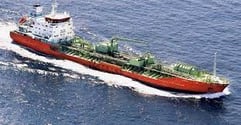

1. In the overall context of global sustainability, how important is sustainability in shipping and why?
Reading across the United Nation’s 17 Sustainable Development Goals (SDGs), the Climate Action goal has the most resonant relevance to the shipping sector. The goal stipulates that we should act now to stop global warming. This is because international shipping is a major contributor to emission of greenhouse gases (GHGs). According to the International Energy Agency (IEA), the sector emitted 714 million tons of CO2 in 2019, equivalent to 2% of energy related CO2 emissions globally.
In 2018, the International Maritime Organisation (IMO) made a welcome step in the right direction by setting a strategy of reducing the sector’s emission of GHGs by 50% to 2050, eliminating it thereafter.
The strategy also aims to reduce the carbon intensity of international shipping by at least 40% by 2030 and 70% by 2050, compared with the 2008 baseline.
However, significant policy gaps remain to provide adequate incentives for shipping operators to align with the stipulated IMO targets. Even if IMO’s ambitious targets are achieved, the reductions would align with only those scenarios set out by the Intergovernmental Panel on Climate Change (IPCC) which would require large-scale carbon capture and storage using technologies currently not in existence today to deliver the Paris Agreement targets.
Given the scale of the sector’s contribution to man-made GHG emissions, one can argue that the IMO’s targets should be recalibrated and toughened further, with clear policies and incentives to align fleet operators and ship manufacturers. Ironically, the global sulphur cap introduced by the IMO in January 2020 may exacerbate the need for recalibration of GHG emission targets. The 0.5% sulphur content cap (or installation of a scrubber to comply with sulphur dioxide emissions regulations) will reduce the sector’s emission of sulphur dioxide. This gas, while harmful in general, has the property of reflecting incoming solar rays and thereby countering the action of GHGs. Indeed, injection of sulphur dioxide into the atmosphere is among the several geo-engineering options being considered by scientists as a last resort to counter global warming.
2. What can shipping companies do to reduce carbon footprint in line with regulations?
With one eye on reducing operating costs and the other on TCFD-aligned reporting, ship operators could mandate their fleets to adopt ‘slow steaming’. This would reduce hydrodynamic losses and consequently bunker fuel consumption to cover the same distance. Continuous introduction of energy efficiency measures to existing vessels could continue to drive incremental reductions in carbon dioxide emissions. But most importantly, safe in the knowledge that regulation and relevant policies to curb emissions will be introduced in near future, shipping operators should elect to order zero emission vessels which make maximum use of wind, solar energy and non-carbon fuels such as hydrogen.
3. What are the benefits of being sustainable for shipping owners & operators?
Sustainable fleets and operations should reduce operating costs. Also, when ordering new vessels, while advanced sustainable models may be more expensive, the lower operating costs are likely to deliver lower full cost of ownership during the lifetime of new ships.
4. What are risks or pitfalls to avoid in developing more sustainable solutions?
Development and application of ratcheting carbon pricing for the sector may make inefficient operators uncompetitive and ultimately unviable. One should recall that it was a shortfall in credits owed to the European Commission for carbon emissions that drove British Steel into insolvency in May 2019. To avoid risks and pitfall, the industry would be encouraged to embrace sustainability principles and strive towards maximum energy efficiency on the way to carbon neutrality as early as possible.
5. Name two or three obstacles for achieving sustainability in shipping (e.g. Standards? Culture? Uncertainty in regulations?) and describe why they matter?
There are many challenges which will challenge the industry to operate according to optimally sustainable practices and business models. For instance:
• Policies are currently inadequate to drive incentives and costs for fleet owners.
• ‘Slow steaming’ may be impractical when international trade and global growth picks up.
• Manufacturers globally are likely to need time and investment to design and switch to production of energy efficient models, particularly those leveraging wind and solar energy and alternative fuels.
• Infrastructure to produce and distribute alternative zero-carbon marine fuels is not in existence yet. Deliberate and sequenced policy actions is needed to overcome the key hurdles to adoption of sustainable practices by the industry.
6. How can technology be leveraged to support sustainability?
The list is long but may include:
• Smart sails of varying design such as solar-PV covered rigid sails or rotary sails may be used to harness wind energy to power new vessels.
• Excess energy from wind and solar may be stored in batteries for operation during calm weather and at night (or in low-light conditions).
• Anti-algae paints may be used to reduce drag and hence energy use.
• Digital technologies could be used to speed up loading of cargo and provisions, thereby facilitating ‘slow steaming’.
7. What's the one thing that you'd want our readers to take away from this roundtable?
On the one hand, the IMO has set the targets for international shipping to slash its emissions. On the other, eighteen banks accounting for £150bn in ship finance, or one third of the global total, signed up to the Poseidon Principles last year. These principles provide a framework for integrating climate considerations into lending decisions to facilitate decarbonization of international shipping.
In summary, regulation and finance are aligning around the Paris Agreement targets. The question for all senior industry executives is how to proactively embark on this exciting transformational change for the industry

These Stories on Decarbonisation